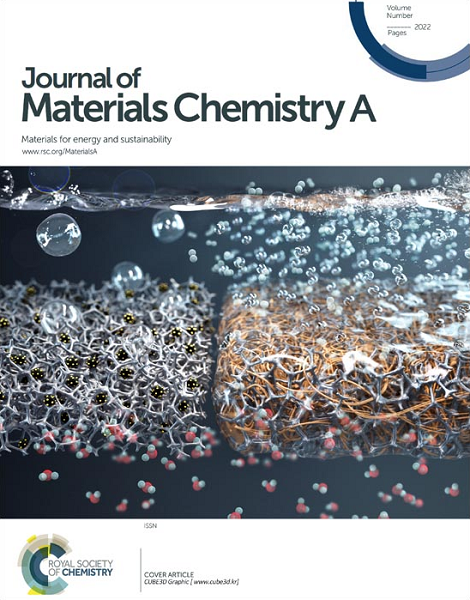Photonic Crystal-Integrated Thermo-Responsive Smart Windows with Multicolor and Enhanced NIR Shielding
IF 10.7
2区 材料科学
Q1 CHEMISTRY, PHYSICAL
引用次数: 0
Abstract
Smart windows have attracted significant attention due to their potential for energy conservation. However, their practical applications are limited by the monotonous color variation and poor near-infrared (NIR) shielding performance. In this study, a novel smart window was constructed by integrating a crack-free photonic crystal array (100 mm×100 mm) with poly(N-isopropylacrylamide) (PNIPAm), sodium carboxymethyl cellulose (CMC), and antimony tin oxide (ATO) nanoparticles. The photonic band gap of the photonic crystal array endows the smart window with unique visible light modulation properties and temperature indication functionality, enabling dynamic color variation at various surrounding temperatures. The smart window exhibits excellent solar light modulation (ΔTsol=38%) and NIR transmittance (TIR=30%), which is attributed to the synergistic effect of ATO nanoparticles and PNIPAm hydrogel. The incorporation of CMC enhances the optical modulation capability and durability of the PNIPAm hydrogel. Due to the heat-absorbing and NIR absorption properties of ATO nanoparticles and the thermochromic and heat insulation characteristics of PNIPAm hydrogel, the smart window achieves a maximum temperature difference of 7.2 °C compared with normal glass. This work provides a novel strategy for constructing smart windows based on photonic crystals, demonstrating great potential in temperature monitoring, heat insulation, and other applications. Keywords: photonic crystals, hydrogels, temperature responsive, smart windows具有多色和增强近红外屏蔽的光子晶体集成热响应智能窗口
智能窗户因其节能潜力而备受关注。然而,它们的实际应用受到颜色变化单调和近红外屏蔽性能差的限制。在这项研究中,通过将无裂纹光子晶体阵列(100 mm×100 mm)与聚n -异丙基丙烯酰胺(PNIPAm),羧甲基纤维素钠(CMC)和氧化锑锡(ATO)纳米颗粒集成在一起构建了一种新型智能窗口。光子晶体阵列的光子带隙赋予智能窗口独特的可见光调制特性和温度指示功能,在不同的环境温度下实现动态颜色变化。由于ATO纳米颗粒和PNIPAm水凝胶的协同作用,该智能窗具有优异的太阳能光调制(ΔTsol=38%)和近红外透射率(TIR=30%)。CMC的加入提高了PNIPAm水凝胶的光调制能力和耐久性。由于ATO纳米颗粒的吸热和近红外吸收特性以及PNIPAm水凝胶的热致变色和隔热特性,与普通玻璃相比,智能窗的最大温差为7.2℃。这项工作为构建基于光子晶体的智能窗提供了一种新的策略,在温度监测、隔热和其他应用方面显示出巨大的潜力。关键词:光子晶体,水凝胶,温度响应,智能窗
本文章由计算机程序翻译,如有差异,请以英文原文为准。
求助全文
约1分钟内获得全文
求助全文
来源期刊

Journal of Materials Chemistry A
CHEMISTRY, PHYSICAL-ENERGY & FUELS
CiteScore
19.50
自引率
5.00%
发文量
1892
审稿时长
1.5 months
期刊介绍:
The Journal of Materials Chemistry A, B & C covers a wide range of high-quality studies in the field of materials chemistry, with each section focusing on specific applications of the materials studied. Journal of Materials Chemistry A emphasizes applications in energy and sustainability, including topics such as artificial photosynthesis, batteries, and fuel cells. Journal of Materials Chemistry B focuses on applications in biology and medicine, while Journal of Materials Chemistry C covers applications in optical, magnetic, and electronic devices. Example topic areas within the scope of Journal of Materials Chemistry A include catalysis, green/sustainable materials, sensors, and water treatment, among others.
 求助内容:
求助内容: 应助结果提醒方式:
应助结果提醒方式:


